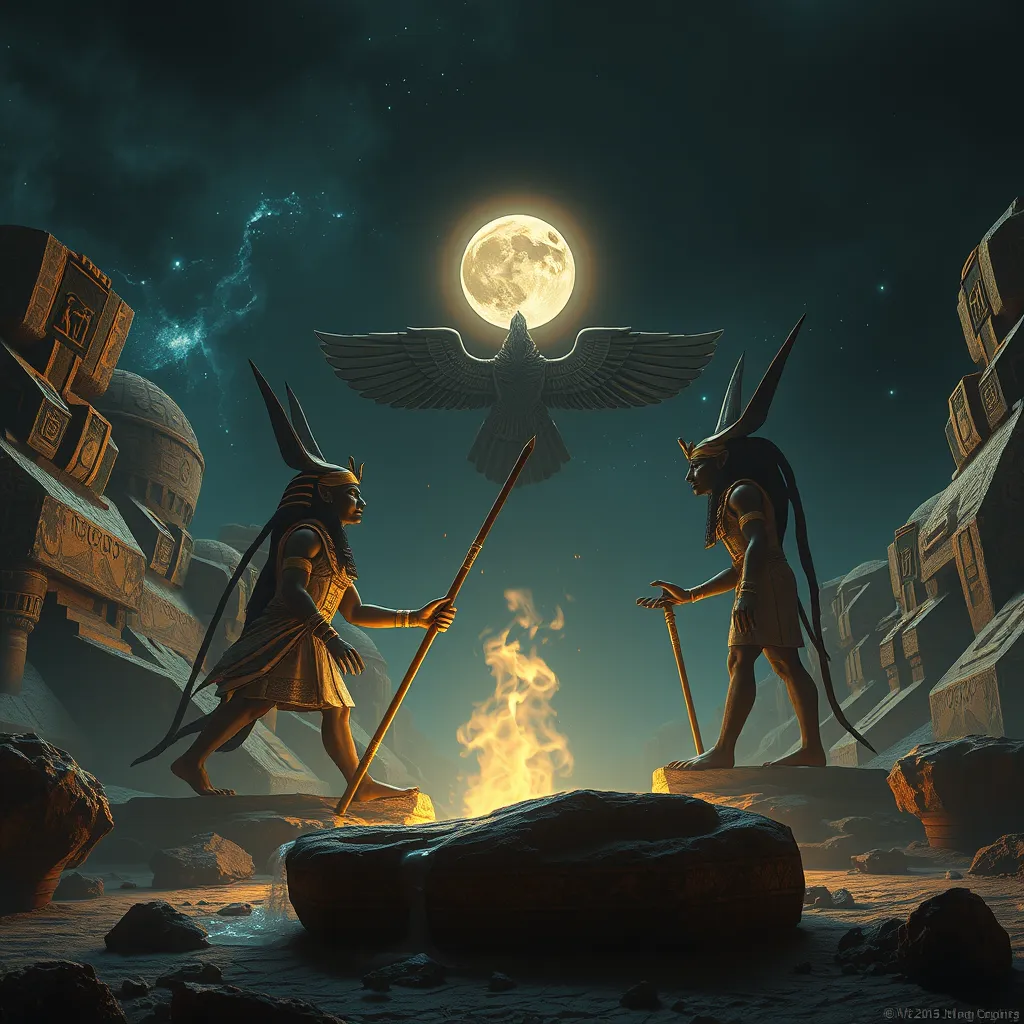The Duat: The Eternal Cycle of Life and Death
I. Introduction
The Duat is a fundamental concept in Ancient Egyptian mythology, representing the realm of the dead and the afterlife. It is not merely a place but signifies the complex beliefs surrounding death and rebirth that permeated Ancient Egyptian culture. The Duat embodies the journey of the soul after death, the trials it faces, and the ultimate quest for immortality.
This article will explore the significance of the Duat in Ancient Egyptian beliefs, its historical context, geographical structure, the journey of the soul through it, the deities associated with it, its representation in ancient texts, and its lasting legacy in modern culture.
II. Historical Context of the Duat
A. The concept of the Duat has its origins in the early beliefs of Ancient Egypt, where the afterlife was seen as a continuation of life on earth. The Duat evolved through various dynasties, reflecting changes in religious practices and beliefs.
B. During the Old Kingdom, the Duat was viewed primarily as a dark, mysterious realm inhabited by the dead. By the Middle Kingdom, it transformed into a more structured environment, where the deceased would journey through to reach the afterlife, highlighting the Egyptians’ growing understanding of life and death.
C. The Duat significantly influenced Egyptian culture and society, shaping burial practices, funerary texts, and art. It emphasized the importance of moral conduct in life, as one’s actions determined their fate in the afterlife.
III. The Structure of the Duat
A. The geography of the Duat is often depicted as a vast, complex landscape filled with rivers, fields, and mountains, symbolizing various stages of the soul’s journey. It is described as a place of both beauty and danger, where the souls must navigate through different realms.
B. Key locations within the Duat include:
- The Hall of Judgment: Where the deceased are judged by Osiris.
- The Field of Reeds: A paradise-like area that represents the ideal afterlife.
- The Lake of Fire: A place of purification for those deemed unworthy.
C. Various elements within the Duat hold significant symbolism, such as the river that represents the boundary between life and death, and landmarks that signify trials and tribulations faced by the soul.
IV. The Journey Through the Duat
A. After death, the soul embarks on a perilous journey through the Duat, navigating obstacles and facing challenges that test its worthiness. This journey is crucial for the soul to reach the afterlife.
B. Trials faced in the Duat include encounters with hostile creatures, treacherous landscapes, and deceptive spirits. Each trial serves to challenge the soul’s integrity and strength.
C. The Weighing of the Heart ceremony is a central event in this journey, where the heart of the deceased is weighed against the feather of Ma’at, the goddess of truth and justice. If the heart is lighter, the soul is deemed worthy, allowing passage to the Field of Reeds; if heavier, it faces destruction by the devourer, Ammit.
V. Deities and Figures of the Duat
A. Osiris, the god of the afterlife, plays a crucial role in the Duat. He presides over the judgment of souls and symbolizes resurrection and eternal life.
B. Other significant deities include:
- Anubis: The god associated with mummification and the protection of the dead.
- Ma’at: The goddess representing truth, justice, and cosmic order.
C. Mythical creatures such as the sphinx and the serpent Apep represent the duality of life and death, embodying both protection and chaos within the Duat.
VI. The Duat in Ancient Egyptian Texts
A. Key texts, particularly The Book of the Dead, provide detailed descriptions of the Duat and the journey of the soul. These texts served as guides for the deceased, outlining the necessary spells and prayers for a successful passage.
B. Interpretations of the Duat in art and literature reveal the Egyptians’ deep understanding of life, death, and the afterlife. Tomb paintings and inscriptions often depict scenes from the Duat, illustrating its significance in the cultural consciousness.
C. These texts shaped the understanding of mortality, emphasizing the belief that life continued beyond death and that one’s actions during life directly influenced their experience in the afterlife.
VII. The Duat’s Legacy in Modern Culture
A. The concept of the Duat continues to influence contemporary spiritual beliefs and practices, as many modern religions explore themes of life after death and moral judgment.
B. The Duat has also found representation in modern media, including films, literature, and art. Works that delve into themes of the afterlife often draw inspiration from Ancient Egyptian beliefs, showcasing the enduring fascination with the Duat.
C. Discussions surrounding mortality and the afterlife frequently reference the Duat, reflecting humanity’s ongoing quest to understand what lies beyond death.
VIII. Conclusion
A. The Duat holds immense significance in the cycle of life and death within Ancient Egyptian mythology. It symbolizes the profound beliefs about the afterlife that shaped the culture and practices of the civilization.
B. The enduring legacy of the Duat highlights the timeless human concerns regarding mortality and the search for meaning beyond death.
C. Ultimately, the exploration of the Duat reminds us of humanity’s quest to comprehend life after death, a journey that resonates through ages, transcending time and culture.




